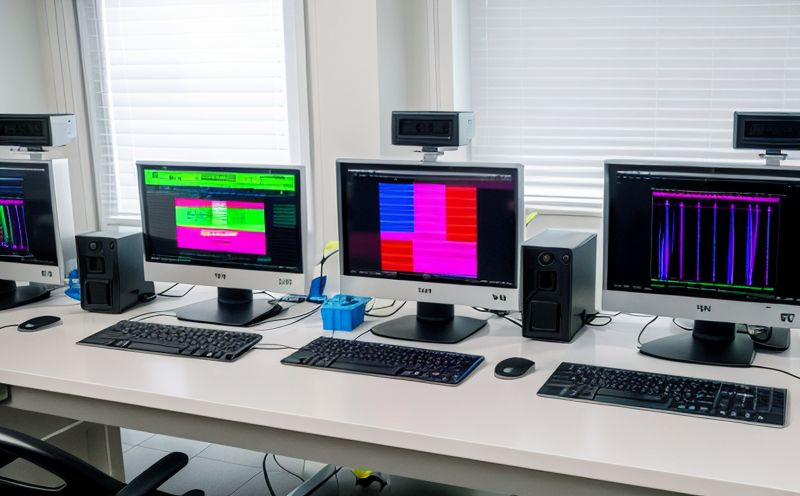EN 17272 Airborne Virucidal Testing in Healthcare Settings
The European Standard EN 17272 specifies a method for determining the efficacy of air disinfectants against airborne viruses in healthcare settings. This standard is crucial for ensuring that air disinfection systems and products effectively reduce viral contamination, thereby enhancing patient safety and minimizing the risk of airborne infections.
Healthcare facilities are particularly vulnerable to airborne viral transmission due to the presence of immunocompromised patients who are at higher risk of infection. By implementing EN 17272-compliant air disinfection systems, healthcare providers can create safer environments that comply with international standards and regulations. This testing method is designed to simulate real-world conditions found in hospitals, clinics, and other healthcare facilities.
The standard outlines a series of steps for conducting airborne virucidal tests, including the selection of appropriate test organisms (viruses), preparation of air samples, exposure of the disinfectant to the virus-laden air, and subsequent analysis. The test organism must be chosen based on its relevance to healthcare settings, typically including enveloped viruses such as influenza A or coronaviruses.
The testing process involves creating a controlled environment where air is passed through chambers containing the disinfectant under investigation. Air samples are then collected before and after exposure to assess viral inactivation rates. The efficiency of the disinfectant is quantified by comparing the number of viable viruses pre- and post-exposure.
The standard also emphasizes the importance of replicating real-world conditions, such as varying air velocities, humidity levels, and particle sizes, to ensure that the test results are applicable to actual healthcare settings. This approach ensures that the disinfectant's performance is evaluated under realistic operating parameters.
Quality managers in healthcare facilities can use EN 17272-compliant testing to verify the effectiveness of their air disinfection systems and products. Compliance with this standard not only enhances patient safety but also demonstrates a commitment to best practices in infection control and prevention.
- Test Organisms: Typically includes enveloped viruses such as influenza A or coronaviruses.
- Controlled Environment: Replicates real-world conditions, including air velocities, humidity levels, and particle sizes.
Why Choose This Test
Selecting the right airborne virucidal test is critical for ensuring that healthcare facilities meet regulatory requirements and provide safe environments for patients. The EN 17272 standard offers several advantages over other testing methods:
- International Recognition: Compliance with this European Standard ensures international acceptance of your facility's practices.
- Real-World Simulations: The test replicates the conditions found in healthcare settings, making it a reliable indicator of disinfectant performance.
The testing method is designed to assess the efficacy of air disinfection systems and products against airborne viruses. By choosing EN 17272-compliant testing, quality managers, compliance officers, R&D engineers, and procurement personnel can ensure that their facilities meet stringent regulatory standards and provide a safe environment for patients.
Compliance with this standard not only enhances patient safety but also demonstrates a commitment to best practices in infection control and prevention. This approach helps healthcare providers maintain a high level of trust with their patient community while ensuring regulatory compliance.
Quality and Reliability Assurance
The reliability of testing results is paramount for any quality assurance program in healthcare settings. EN 17272 ensures consistency and accuracy through rigorous validation procedures:
- Standard Operating Procedures (SOPs): Detailed guidelines are provided to ensure standardized testing protocols.
- Data Verification: Results from multiple independent laboratories are cross-verified for accuracy.
The standard also emphasizes the importance of regular calibration and maintenance of test equipment. This ensures that all tests conducted under EN 17272 are accurate and reliable, providing consistent results across different testing facilities.
In addition to these procedural measures, the use of standardized test organisms (such as influenza A or coronaviruses) helps ensure consistency in testing outcomes. By adhering to these protocols, healthcare providers can have confidence in their testing results and make informed decisions about air disinfection systems and products.
International Acceptance and Recognition
The EN 17272 standard is widely recognized across Europe and internationally for its rigorous methodology in assessing airborne virucidal efficacy. Laboratories accredited to perform this test are trusted by regulatory bodies, healthcare providers, and manufacturers:
- Regulatory Compliance: Ensures compliance with international standards.
- Global Acceptance: Results from EN 17272-compliant tests are accepted globally, facilitating trade and collaboration between countries.
This standard is particularly important for manufacturers of air disinfection systems and products who wish to demonstrate the efficacy of their products in healthcare settings. By adhering to this standard, they can ensure that their products meet rigorous international standards and gain acceptance from regulatory bodies worldwide.
The widespread adoption of EN 17272 underscores its importance in maintaining high standards of infection control and prevention across various sectors. Its global recognition ensures that the testing results are credible and reliable, fostering trust among stakeholders and contributing to the overall safety and efficacy of healthcare environments.





